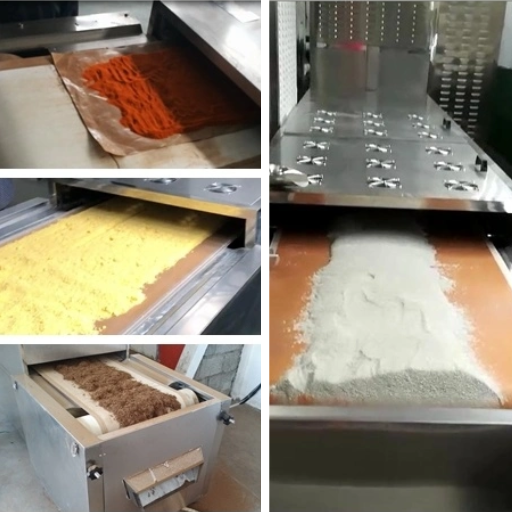The chemical industry constantly looks for creative ways to improve efficiency and improve their product quality. In recent times, microwave technology has proven to be a game changer in drying chemical powders. What this blog discusses is microwave drying systems, which change everything: those that are time-saving, use little energy, and retain compound integrity. We hope that by looking at the principles behind its benefits and applicable uses, we will have covered enough ground on how microwaves can revolutionize the process of drying chemical powders forever. This article will give you insights into new cutting-edge technologies in this field, whether experienced or not – it’s worth reading.
What is Microwave Chemical Powder Drying?

Image source: https://industrialmicrowave.com/
Drying chemical powders using a microwave is known as microwave chemical powder drying. Microwave energy is used to evaporate the moisture content in chemicals. Traditional ways of drying depend on conduction and convection heat transfer, unlike this method, where water molecules are heated straight away by microwaves, thus making it fast and uniform in terms of dehydration. This leads to quick dryness and evenness, thereby cutting down on time taken for drying and saving power while retaining the properties of chemicals intact. The procedure can be controlled accurately due to its high efficiency, hence applicable across many sectors within the chemical manufacturing industry.
How Does Microwave Technology Work in Drying?
The drying process using microwave technology is based on microwave radiation emission, which can pass through chemical powders and excite water molecules directly. Such excited molecules generate this heat due to molecular friction, leading to quick moisture evaporation. Unlike ordinary methods, where heat is transferred from the outside inwardly, microwaving guarantees even heating in the body of a substance that causes faster moisture removal. The technique reduces the time and power consumed during drying while preserving the qualities of chemicals, thus making it useful for industrial applications in this field.
Benefits of Using Microwave for Drying Chemical Powder
Microwave drying has many advantages over traditional methods. First, it saves time by quickly cutting hours into minutes, which makes industrial processes more productive and efficient. Also, microwave drying is energy-saving because it needs even 50% less power than conventional ways, leading to lower operation expenses and environmental influence. Furthermore, this technique guarantees homogeneous moisture removal throughout the material being dried, thereby averting local overheating or under-drying that may alter powders’ chemical or physical properties. Last but not least, essential microwaves can be easily controlled for different materials at various stages of their dryness, enabling broader adjustments in process parameters to enhance adaptability and improve the quality of final products.
Applications of Microwave Drying in Various Industries
Microwave drying technology has become popular in many sectors because of its effectiveness and flexibility. In pharmaceuticals, it quickly dries active ingredients and excipients to control moisture and preserve delicate compounds’ stability. Microwave drying dehydrates food industry products such as fruits, vegetables, and herbs, which speeds up the process while retaining nutritional value and taste. Equally important, textile manufacturers also use microwaves to dry fabrics and yarns uniformly, improving dye absorption and the quality of final products. These different uses show how adaptable microwave dryers can be to various industries’ needs, thus spurring creativity and improving operational efficiency.
How Does a Microwave Dryer for Chemical Powder Work?
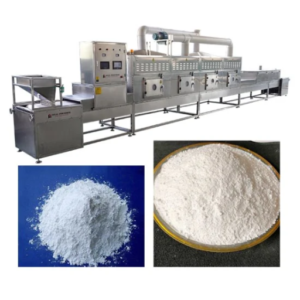
Chemical powders are dried using a microwave dryer, which heats from within using electromagnetic waves. The water molecules in the chemical powder take in the energy produced by microwaves, causing them to shake and make heat, thus quickening the drying process. Unlike other methods for drying with microwaves, energy distribution uniformity that is brought about by conventional techniques helps to lower hotspots and thermal degradation. Also, these dryers usually have accurate control systems that enable operators to change power levels and drying times according to the varied needs of chemical powders, thereby enhancing drying efficiency and guaranteeing good quality finished products in most cases.
Overview of Industrial Microwave Systems
Sophisticated industrial microwave systems are designed to make various drying and heating processes in different industries more efficient. These systems usually consist of a microwave generator, applicator, and control unit, among other essential parts. In this case, electromagnetic waves are produced by the microwave generator and directed into an applicator, where they interact with the treated substance.
Industrial microwave systems can also be identified as those units that have been developed to help in quicker drying or heating processes within different sectors through the use of radio frequencies having higher wavelengths than those used by typical household appliances like ovens, etcetera; these gadgets work best when large amounts need to dry quickly uniformly heated up. The main advantage of them is that they have components, for instance, a power source section that emits electromagnetic waves, an applicator part where the material being processed is placed, and the control unit region, which enables one to manage output powers accurately depending on material types, among others.
Another advantage associated with industrial microwaves is that they can heat materials uniformly at high speeds. Traditionally, thermal methods have been employed, but it takes some time before every part gets heated up since only the outer layers get hot first. At the same time, interior sections remain cold, thus taking longer durations for them all to overheat equally, unlike this case whereby microwaves penetrate deeper into objects, causing rapidity in terms of heating rates within shorter periods, thereby making everything dry faster, too! Additionally, even though such devices use radio frequencies with larger wavelengths than domestic ones, they still ensure even energy distribution throughout substances under treatment, preventing any chances of getting burned due to uneven heat supply.
These machines can be used differently, such as drying chemical powders, food products, textiles, etcetera. For example, the chemical industry may require microwave drying because it helps maintain stability when dealing with heat-sensitive compounds so that other properties do not change much during processing. In contrast, nutritionists will choose this technique when dehydrating fruits and vegetables since most nutrients are destroyed by high temperatures but preserved at lower ones. Also, microwave systems enhance dye penetration fabric quality in the textile industry.
As industries continue searching for sustainable methods of production coupled with energy conservation measures, adopting more environmentally friendly approaches will be necessary while carrying out different manufacturing activities. Thus, industrialization should not lag when it comes to utilizing such technologies as microwaves, which are known to promote ecological balance even as they enhance faster working speeds through the provision of equal opportunities where all materials can get dried or heated uniformly within the shortest periods possible so that no item remains wetter than others, thereby reducing the drying time required and saving power, too.
Operating Principles of Microwave Drying Equipment
The concept behind microwave drying equipment is dielectric heating, which generates heat through microwaving and causes polar molecules within the material to shake. A magnetron usually produces these microwaves before they are emitted into the applicator that houses the material. Once inside, microwaves make their way through it by inducing fast successive reorientation of molecules, thereby creating internal heat. Microwaving from inside out guarantees even distribution of temperature and speeds up drying. What’s more, such machines boast control units that enable accurate adjustment of microwave power and time of exposure depending on what is being dried; this ensures efficiency and uniformity in product quality during drying.
Critical Components of a Microwave Dryer
A microwave dryer’s main components are a magnetron, waveguide, applicator, and control system. It is the magnetron that produces microwaves as its essential part. Afterward, these microwaves are directed through a waveguide into an applicator where a substance for drying is located. The applicator evenly distributes microwaves, ensuring uniform heating and drying across its mass. A control system is used to adjust power level, frequency, and duration of exposure to them for precise regulation according to specific requirements of the treated material. Furthermore, safety precautions are considered while designing microwave driers, like shielding against leakage of waves outside their walls or cooling systems that handle excessive heat produced during operation.
What are the Advantages of Using Microwave Drying Equipment?
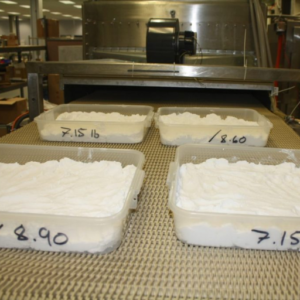
In contrast to traditional drying approaches, microwave drying equipment has many benefits. For one thing, it can dry quickly and evenly so that processing times are shortened considerably. Secondly, this kind of dryer works by heating the inside, which ensures that materials get dried uniformly, thereby increasing the quality and consistency of products. Thirdly, energy efficiency is another advantage of microwaves, wherein less power is used than other methods to achieve similar results. Fourthly, accurate temperature control coupled with precise exposure duration enables customized drying processes, which foster property retention among heat-sensitive materials. Lastly, compactness, as well as high safety standards associated with advanced industrial microwave dryers, allow them to be employed widely across various industries while minimizing risks and maximizing productivity at the same time.
Efficiency and Speed of Microwave Drying
The high effectiveness and quickness associated with microwave drying make it a significant player in numerous industrial sectors. The speediness of this method can cut down processing times more than any other traditional technique by quickly eliminating any moisture content. This happens because the waves can go through the object and warm it up evenly from inside to outside, which ensures that all parts are completely dried out. Another thing worth noting is its energy efficiency, whereby microwaves directly act on substances without heating surrounding areas, saving power. Moreover, precise management of the drying process enables the retention of essential properties in heat-sensitive materials, which are widely used in the food industry and medical science, and the production of new-generation composites.
Energy Consumption and Cost Implications
Microwave drying often saves energy in a big way. Microwave power is aimed directly at the product that needs to be heated so the surrounding air doesn’t have to warm up first; this can save a lot of energy. It can save more energy than any other method currently used for drying things. Current industry awareness indicates that microwave technology sometimes cuts power bills by half. Also, faster processing times mean reduced running costs as well. The cost savings are significant, but there’s more to it than that: with better control over what happens inside them during production or manufacturing processes, etc., products are of higher quality, and their attributes show less variation between batches – both very desirable things indeed when selling goods is done.
Improved Product Quality and Consistency
D drying things in a microwave significantly improves product quality and consistency, which is essential for many industries. Unlike traditional ways of drying, microwaving does it evenly, thus reducing cases of uneven drying and hotspots. Such evenness makes the final product uniformly good all through, with more nutrients being preserved during food processing; this also maintains color or flavor in food processing better than any other method can do so without affecting pharmaceutical compounds’ integrity. Moreover, microwaves keep materials’ structural properties intact, which matters most in advanced manufacturing processes. And because it controls everything about how moisture leaves an item being heated up like never before possible – right down to each molecule involved – microwave ovens offer unprecedented control over drying times. Not only does this allow for customization, but it also gives way to optimization, hence leading to more significant overall result achievement.
How to Choose the Best Microwave Drying Machine?
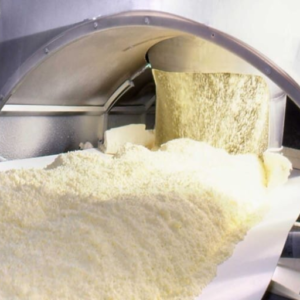
Several important considerations must be made when selecting the top microwave drying machine. The first thing to do is to look at the capacity of any given device vis-à-vis your production volume requirements. Secondly, you need to evaluate different models in terms of their energy efficiency; more energy-efficient appliances will lower operational costs. Look into material compatibility with specific materials and ensure they can dry uniformly without compromising quality. Besides this, control features must also be scrutinized because accurate settings are necessary for process customization. Lastly, reliability and ease of maintenance should be checked to reduce downtime. Following these guidelines makes it possible to choose a microwave drying machine that best suits industrial needs.
Factors to Consider When Selecting a Microwave Dryer
- Capacity and Throughput: Make sure the microwave dryer can handle your production volume needs. Take into account batch size and how often it must be run to meet commercial requirements.
- Capacity and Throughput: Make sure the microwave dryer can handle your production volume needs. Take into account batch size and how often it must be run to meet commercial requirements.
- Uniform Drying and Quality Preservation: Materials should dry evenly in the dryer so that high quality is maintained throughout all outputs; this prevents hot spots, too. Such uniformity is critical for food processing, where nutrient, color, or flavor preservation matters most. Pharmaceuticals’ compound integrity also needs to be kept intact.
- Control Features and Customizability: Variety is the spice of life, and precise control over drying parameters should allow for different materials’ peculiarities. This way, there will always be an opportunity to create the best conditions necessary for drying anything under the sun (or rather clouds).
- Material Compatibility: Ensure that whatever you want dried can actually go into this machine without damage during the procedure while still achieving the desired level of dryness.
- Reliability and Maintenance: It’s better to select machines known for not only their durability but also their low maintenance requirements, which help minimize downtimes, especially when dealing with heavy-duty tasks like continuous production demands.
Considering these points will enable you to choose a microwave dryer suitable for your industrial needs, ensuring effectiveness, efficiency, and reliability throughout the drying process.
Comparing Different Models of Microwave Dryers
It is important to look into the essential functionalities and user reviews to ensure you are making a well-informed decision when comparing microwave driers.
- Hitachi Industrial Microwave Dryers:
- Pros: High energy efficiency; uniformly excellent drying performance; advanced controls.
- Cons: Higher upfront costs; inflexible batch sizes.
- Best For: Large-scale industrial use with tight quality control needs.
- Panasonic Vacuum Microwave Dryers:
- Pros: Better nutrient retention and flavor preservation; energy-saving technology; reliability.
- Cons: More complicated maintenance requirements; steep learning curve for optimal operation.
- It is best For Food processing enterprises or pharmaceutical industries where product integrity is paramount.
- COMBI-MICRO™ Tunnel Microwave Dryers:
- Pros: Flexible, scalable design with rapid drying times across many materials.
- Cons: It requires lots of space to install, and prolonged heavy usage has higher power consumption.
- Best For: Medium to large production sites that need fast turn-around and flexibility in processing various products.
These models can indicate which best suits your operational demands, maximizing efficiency while maintaining high-quality outputs.
Maintaining Your Microwave Drying Equipment
Maintaining your microwave drying equipment in good condition maximizes its life span and ensures it works at optimum levels.
- Clean Frequently: Cleaning should be done often, both inside and outside surfaces, to avoid the accumulation of contaminants or residues that may compromise hygiene standards and interfere with the drying process.
- Regular checks: Carry out comprehensive inspections of this facility, including heating elements, control panels, mechanical parts, etc. Look for signs of deterioration, such as cracks, then fix them immediately before they become costly repairs or cause downtime.
- Calibration and Monitoring: You should calibrate controls regularly so that they always provide accurate temperature and power settings. Monitoring instruments can also track and adjust performance indicators whenever necessary to sustain efficiency.
- Lubrication And Replacement: Keep moving components well-oiled while replacing those worn out with new ones since this will enhance smooth running by preventing mechanical breakdowns through friction reduction.
- Training Operators: Make sure that all users are adequately trained in using and maintaining these machines. Also, organize refresher courses for them on what is expected from their side based on current best practices and any new updates that might have been introduced into the system over time.
If followed correctly, these steps will ensure the reliability of microwave drying equipment throughout its industrial applications, enabling you to realize maximum returns.
Common Issues in Microwave Chemical Powder Drying and How to Solve Them
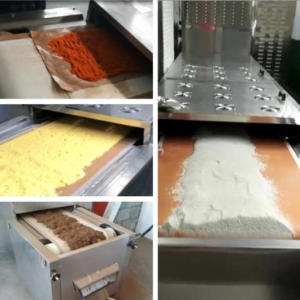
- Problems with evenness of drying: This occurs when the chemical powder is not dried evenly, which results in varying quality. To fix this, make certain that there is an equal distribution of load in the dryer and adjust power and temperature settings to fit the specific characteristics of the particular powder being dried.
- Overheating: When compounds within chemicals are overheated, they can degrade, thus reducing the effectiveness of products. Therefore, accurate temperature regulators and continuous monitoring systems throughout the drying process will help avoid overheating and keep it under control to preserve ideal conditions.
- Clumping of Powder: Clumps usually form due to moisture getting trapped in some parts. To alleviate such a situation, begin with a pre-drying phase, where the initial content is reduced. Then, employ mechanical stirring or the air flow method, which ensures constant movement, thereby preventing the formation of lumps.
- Equipment Downtime: If machines break down frequently, they cause long periods during which nothing can be produced. The only way to deal with this issue is to follow scheduled maintenance activities like cleaning, inspection, and calibration, among others, as outlined; hence, any unexpected breakdowns will be avoided.
- Energy Consumption: Operational costs shoot up when too much energy is used. Reducing consumption can be achieved through steps like optimizing drying parameters so that only necessary resources are employed at each stage, plus regular checks on systems’ performance to ensure they always operate efficiently.
If addressed early enough, these simple common challenges will ensure reliability and efficiency in drying chemical powders.
Troubleshooting Moisture Content Levels
For microwave chemical powder drying when troubleshooting moisture content levels, follow these steps:
- Regular Monitoring: Consistently gauge the moisture level during dryness using a sound sensor for moisture. It is essential to carry out regular monitoring as it will help notice deviations early enough and make necessary adjustments.
- Equipment Calibration: Ensure that all measuring equipment is calibrated correctly. Failure to calibrate may cause inaccurate readings due to faulty or uncalibrated sensors, leading to the wrong drying process.
- Control Environmental Factors: Control environmental conditions such as humidity and temperature within the drying chamber. Failure to control external factors may significantly affect the moisture content in the dried powder.
- Optimize Drying Parameters: Adjust power levels, airflow rate, and drying time, among other things, depending on the properties of specific powders so that desired moisture levels are consistently achieved through this method.
- Perform Routine Maintenance: Regularly inspect and maintain all dryer components to prevent mechanical faults that could interfere with desired levels of wetness or dryness in products.
This allows one to effectively manage their moisture content level, thus attaining high-quality drying results.
Preventing Leakage and Ensuring Safety
To keep the quality and safety of final products at optimal levels, we must prevent leakages and ensure protection in microwave powder drying processes. Here are some things to consider:
- Regular Inspection and Maintenance: Check all parts of the microwave dryer regularly for signs of wear or damage. Replace faulty components immediately so that they don’t cause any leakage.
- Checking the Seals: The entire drying chamber and its associated piping should have an effective seal system. This means that every gasket must be in good condition and working correctly since worn-out seals may cause leaks that can contaminate the materials being processed.
- Monitoring Pressure: One should always monitor pressure changes within his/her machine used for drying continuously because they could indicate a hole somewhere. Use alarms alongside sensors connected to areas where these faults are likely to occur most frequently, hence alerting the operator about potential threats before they become full-blown problems.
- Adequate Ventilation: Proper ventilation needs to be installed to safely deal with gaseous by-products during this process and prevent the accumulation of dangerous gases such as carbon monoxide within the vicinity where drying takes place.
- Safe Handling Procedures: Train all workers involved on how best to handle chemicals under such circumstances, including what measures need to be taken if something unexpectedly goes wrong; besides, everyone must put on appropriate PPE at all times when dealing with hazardous substances like these here.
- Safety Standards Compliance: It is important for them to adhere to set industry standards regarding safety precautions. Regularly reviewing safety protocols will help incorporate the latest technologies into practice, thus making them more effective across different workstations.
These actions will help you avoid any spillage and enhance the general security of your MW powder drying process.
Optimizing Drying Time and Efficiency
Enhancing the drying time and efficiency of chemicals in microwave chemical powder drying involves different strategies as follows:
- Temperature Regulation: Controlling the temperature inside the chamber for drying using microwaves can help save a lot of time and increase its efficiency. Adjusting power levels and their distribution can prevent overheating and ensure even drying.
- Moisture Monitoring: During the drying process, it is essential to use real-time sensors that can continuously measure the moisture content of powders. This enables one to dynamically change parameters so that uniformity is maintained while quality deterioration due to over-drying is prevented.
- Particle Size and Distribution: The rate at which particles dry depends on their size and uniform size distribution. If these factors are considered, efficient drying will occur, whereby all parts take equal amounts of heat energy, thereby reducing the total time taken for completion.
- Software For Process Optimization: Advanced software optimization programs should be incorporated. These programs can predict models through machine learning and thus adjust parameters during drying. Such technology bases energy usage on each batch’s unique characteristics, hence minimizing consumption and the period required for this activity.
- Load Balance: There should be proper distribution among loads placed within the dryer so that no point becomes too hot or cold compared to others. Failure to balance may cause some zones to remain wet while others get burnt, leading to inefficiency throughout.
Adhering to these measures will enable one to achieve shorter durations but more efficient microwave chemical powder drying processes, thus saving energy without compromising quality.
Frequently Asked Questions (FAQs)
Q: What is microwave drying technology, and how does it benefit chemical material drying?
A: Microwave drying technology uses microwave energy to heat and dry chemical materials. This method allows for quicker and more uniform drying, reducing the drying process duration and enhancing productivity. It also minimizes the thermal degradation of sensitive materials.
Q: How does microwave equipment from the Shanghai Lanai microwave equipment company work?
A: The microwave equipment from Shanghai Lantai Microwave Equipment Company employs advanced microwave heating technology to generate microwave energy. This energy penetrates materials to heat and dry them from the inside out, ensuring efficient and effective drying.
Q: What are the advantages of using microwave vacuum drying for chemical powders?
A: Microwave vacuum drying combines the benefits of microwave heating and reduced pressure to speed up the drying process. It lowers the drying temperature, preserving the integrity of heat-sensitive chemical materials and achieving high-quality results.
Q: What types of materials can be dried using tunnel drying equipment?
A: Tunnel drying equipment is suitable for drying various materials, including chemical powders, food products, and pharmaceuticals. It is efficient for large-scale production and consistent drying results.
Q: How does microwave energy penetrate and heat chemical materials during drying?
A: Microwave energy penetrates chemical materials and causes water molecules within them to vibrate rapidly. This generates heat internally and facilitates even and rapid drying. The control system ensures precise regulation of the process.
Q: What sets microwave dryers apart for drying chemical powders?
A: Microwave dryers for drying chemical powders offer faster processing times, uniform heating, and energy efficiency than traditional methods like hot air or conventional heating systems. They are cost-effective and improve the overall quality of the dried products.
Q: How does the drying system in microwave equipment enhance heating and drying applications?
A: The drying system in microwave equipment uses a combination of microwave energy and advanced control systems such as PLC to monitor and adjust the drying parameters. This results in optimized heating and drying, making it suitable for various industrial applications.
Q: What role does the control system play in microwave heating and drying technology?
A: The control system in microwave heating and drying technology regulates the application of microwave energy, ensuring consistent and accurate heating. It helps maintain product quality by preventing over- or under-heating and allows for precise control of the drying environment.
Q: How does the use of microwave drying technology impact the cost of production in industrial applications?
A: Microwave drying technology reduces the cost of production by decreasing drying times, energy consumption, and waste. It also improves product quality and throughput, leading to more efficient and sustainable operations.













